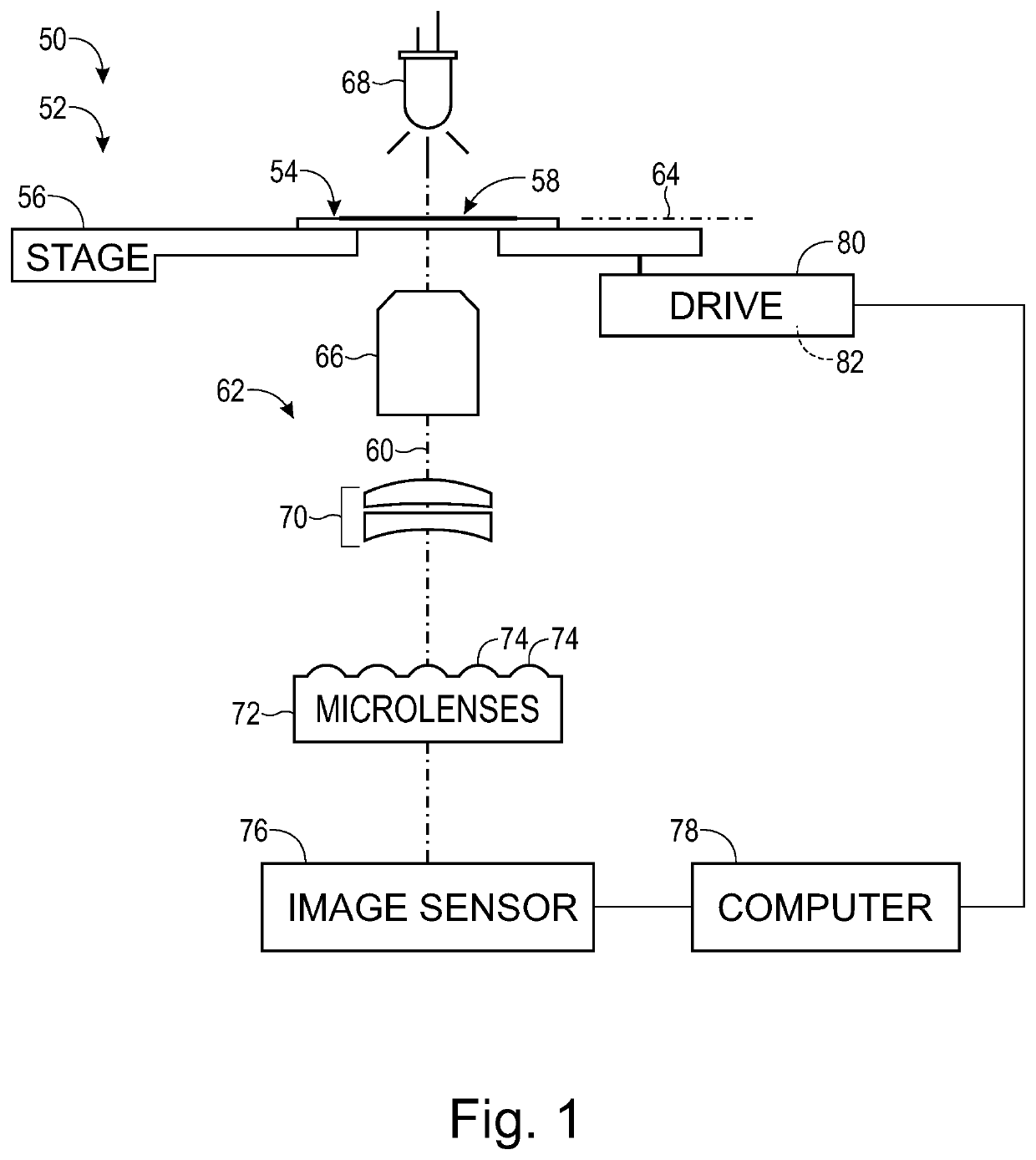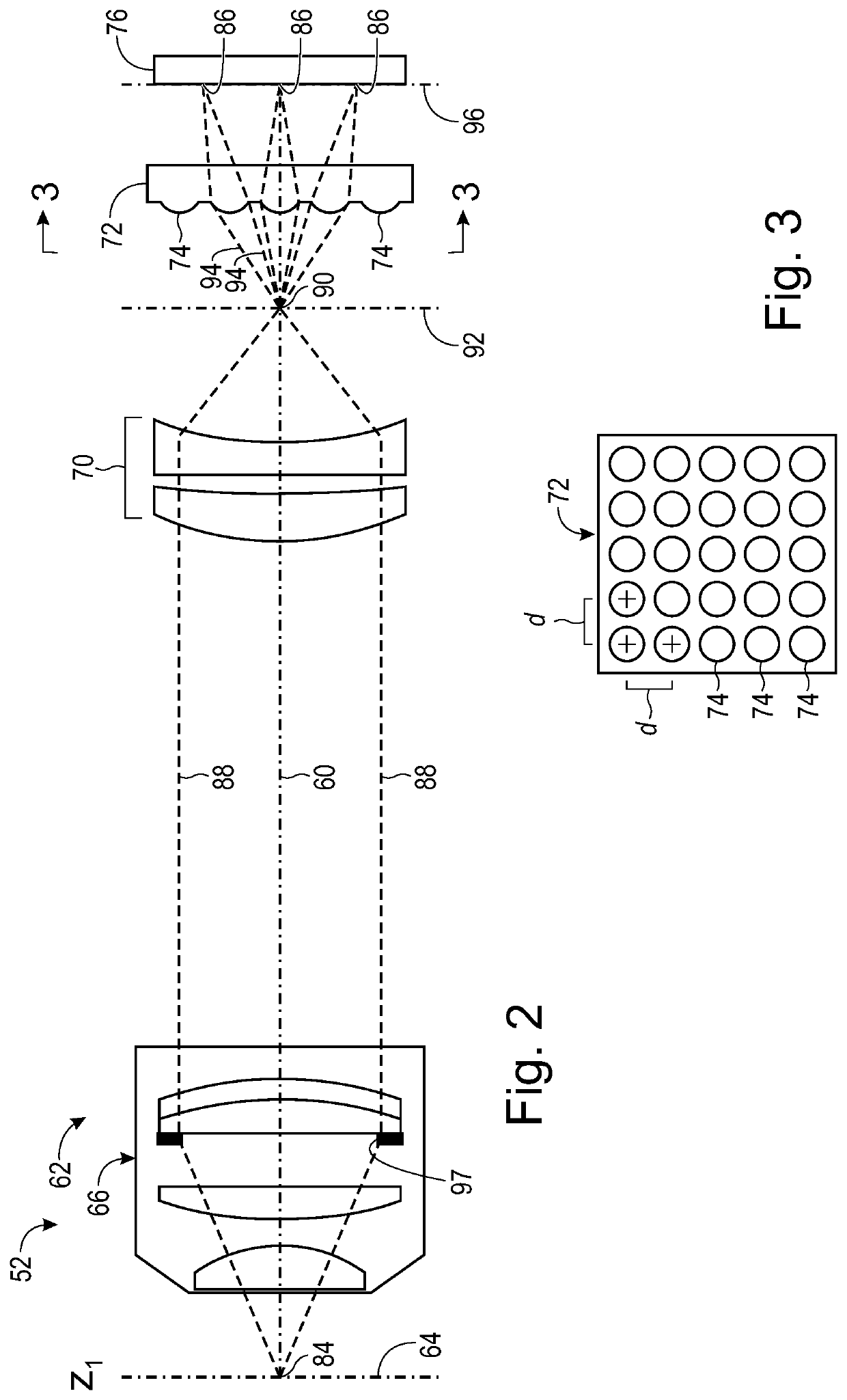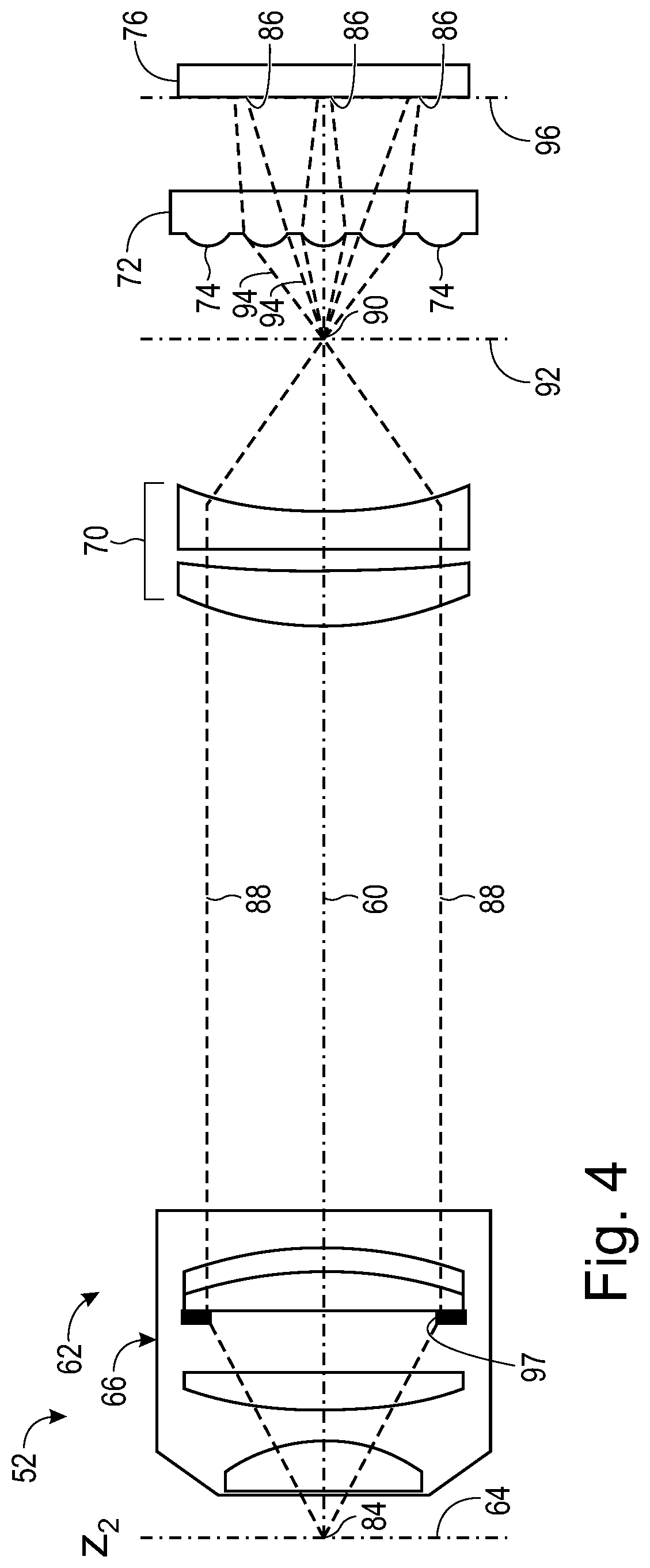Calibration of a light-field imaging system
a light-field imaging and system calibration technology, applied in image enhancement, image analysis, instruments, etc., can solve the problems of deviations in actual optical geometry compared to assumed optical geometry measured externally, inability to easily determine relative distances inside the light-field microscope to the required accuracy, and inability to accurately determine the required accuracy
- Summary
- Abstract
- Description
- Claims
- Application Information
AI Technical Summary
Benefits of technology
Problems solved by technology
Method used
Image
Examples
example 1
alibration Targets
[0123]This example describes further exemplary calibration targets 54 that may be suitable for the systems and methods of the present disclosure; see FIGS. 15-18.
[0124]FIG. 15 shows an exemplary embodiment 170 of calibration target 54 having two types of periodic markers 110, 172 located at nodes of the same rectangular grid.
[0125]Calibration target 170 is similar to calibration target 102 (see FIGS. 7 and 8A) except that marker 172 replaces feature 116 (which is created by the absence of any marker at a node of a grid defined by markers 110). Each copy of marker 172 has a size and / or shape that makes it optically distinguishable from each copy of marker 110, and may be repeated periodically to define a feature period 118 for the marker.
[0126]FIG. 16 shows another exemplary embodiment 180 of calibration target 54 having only a single type of marker 110. Calibration target 180 is the same as calibration target 102 except that every tenth marker 110 is missing, inste...
example 2
on Data
[0128]This example describes total and microlens magnification values measured as a function of z-position with working embodiments of a light-field microscope and a calibration target; see FIGS. 19 and 20.
[0129]The measured magnification values for each magnification parameter M(z) may be fitted to a function of the form shown below in Equation 13 to allow extrapolation and interpolation to other z-positions not expressly calibrated:
[0130]M(z)=1a·z+b(13)
Where a and b are constants. Other fit functions may be suitable instead.
example 3
Embodiments
[0131]This example describes selected embodiments of the present disclosure as a series of indexed paragraphs.
[0132]Paragraph 1. A method of calibrating a light-field imaging system having a lens array (e.g., a microlens array) and an image sensor, the method comprising: (a) capturing a z-stack of light-field images of a calibration target using the image sensor, while the calibration target is located at a plurality of different z-positions; and (b) determining a total magnification of the light-field imaging system and a lens magnification of the lens array from each light-field image of the z-stack, optionally the imaging system has a stage
[0133]Paragraph 2. The method of paragraph 1, further comprising calculating a point spread function as a function of the z-position of the calibration target using the z-stack of light-field images.
[0134]Paragraph 3. The method of paragraph 2, wherein each light-field image of the z-stack includes a plurality of subimages, and where...
PUM
 Login to View More
Login to View More Abstract
Description
Claims
Application Information
 Login to View More
Login to View More - R&D
- Intellectual Property
- Life Sciences
- Materials
- Tech Scout
- Unparalleled Data Quality
- Higher Quality Content
- 60% Fewer Hallucinations
Browse by: Latest US Patents, China's latest patents, Technical Efficacy Thesaurus, Application Domain, Technology Topic, Popular Technical Reports.
© 2025 PatSnap. All rights reserved.Legal|Privacy policy|Modern Slavery Act Transparency Statement|Sitemap|About US| Contact US: help@patsnap.com



